Exploring Rock Sanding Machines: Techniques and Uses
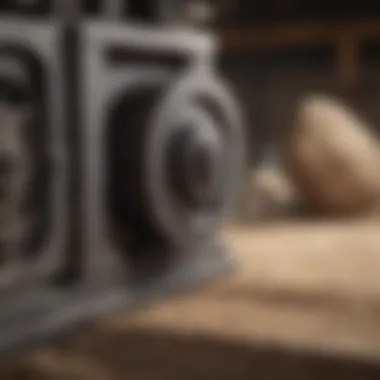

Intro
In the realm of geology and fossil collecting, the tools we choose often determine the quality of our endeavors. Among these, rock sanding machines stand out for their pivotal role in transforming rough specimens into polished masterpieces. These machines are not just gadgets; they're the bridge between nature's raw artistic expression and our ability to appreciate and showcase it. From the novice hobbyist eager to uncover the beauty hidden within a pebble to seasoned professionals restoring ancient stones, understanding rock sanding machines is essential for achieving stellar results.
Rock sanding machines come in various forms, each designed with specific applications in mind. Their functionalities vary, but all aim to achieve the same goal: refining surfaces to reveal the intrinsic beauty of minerals and fossils. We'll dig into the different types available, how to properly operate them, and the maintenance practices necessary to keep them running smoothly. We will also underline the importance of safety, for handling machinery should never be taken lightly.
So, saddle up as we embark on this journey into the world of rock sanding—where every grain of dust tells a story, and every polished stone is a celebration of time and technique.
Featured Collectible of the Month
Overview
This month, we turn our attention to the stunning Ammonite, an ancient marine creature whose fossilized remains have captured the imagination of many collectors. Known for their intricate spiral shapes and colorful patterns, Ammonites serve not only as beautiful collectibles but also as key indicators of geological timelines. Seeing them polished to perfection is a testament to the skill of rock sanding.
This unique fossil exemplifies the types of specimens that gain both aesthetic and educational value when properly sanded. By employing a high-quality rock sanding machine, one can enhance the visual appeal of Ammonites, revealing details that might languish beneath layers of roughness.
Historical Significance
Ammonites were prevalent during the Mesozoic Era, capturing the essence of a long-lost ocean ecosystem. Their fossils provide insights into the biodiversity that thrived during that time. Rock sanding allows collectors to appreciate these gorgeous forms while also confronting their geological past. Polished Ammonites can serve as conversation starters, sparking interest in not just geology and paleontology, but also the larger complexities of Earth's history.
Understanding the significance of specimens like Ammonites is crucial for collectors, not just for their beauty but also as pieces of Earth's magnificent story.
Identification Techniques
Visual Characteristics
When it comes to identifying collectibles like Ammonites or other fossils, keen observation is your best friend. First, inspect the surface for distinct spirals and internal chambers. The color patterns—ranging from muted browns to vibrant blues—also play a pivotal role in identification. The texture may vary; polished surfaces can sometimes reveal more about the rock's formation history than rough specimens.
Resources for Identification
Several valuable resources exist for collectors eager to sharpen their identification skills:
- Online Communities: Platforms like Reddit host groups dedicated to geology enthusiasts, where you can ask for insights or share your finds.
- Books and Guides: Various publications can give deeper insight into the characteristics of specific fossils, enhancing your ability to identify accurately.
- Museums and Exhibitions: Visiting these places can provide hands-on experience, allowing you to compare your specimens to professionally curated collections.
By leveraging these tools, collectors can ensure they appreciate not just the beauty of their finds but also their scientific significance.
"Polishing techniques enhance the natural beauty of fossils, allowing collectors to appreciate the artistry crafted by nature over millions of years."
With this foundational understanding of both the utility of rock sanding machines and the collectible pieces worthy of such refinement, you're well on your way to becoming a savvy collector who knows how to maintain and operate these valuable tools efficiently.
Prolusion to Rock Sanding Machines
Rock sanding machines have carved a niche within the realm of geology and craftsmanship. These machines serve not just as tools; their importance stretches to numerous applications across various fields, from geological research to artistic expressions. Coming to grips with these machines doesn't merely equip one with the knowledge of how to use them; it illuminates their pivotal roles in shaping rocks and enhancing their aesthetic appeal.
For collectors—both enthusiasts and seasoned professionals—the advantages of mastering rock sanding techniques can lead to profound benefits. Understanding how different machines operate and the techniques best suited for diverse rock types unlocks creativity and efficacy in their collectible pursuits.
This section will delve into the definition and purpose of these machines along with a glance at their historical roots, providing a solid footing for readers as they navigate the ins and outs of rock sanding.
Definition and Purpose
A rock sanding machine, at its core, is designed to smooth, shape, and prepare rocks for various purposes. Whether that be for geological studies, art projects, or simply enhancing the visual appeal of a collection, these machines offer versatility that can’t be understated.
The machines typically use abrasive materials to achieve desired finishes. The grit and the method applied are decided based on the rock type and the intended outcome. With handheld models for smaller projects and larger, more powerful industrial machines, the spectrum of functionality caters to every need.
In essence, these machines are crucial in helping to refine rocks into forms that tell stories, serve educational purposes, or manifest artistic visions. They play an important role by transforming the rugged exterior of naturally sourced materials into polished or shaped objects that hold both beauty and significance.
Historical Context
The journey of rock sanding machines is rooted deeply in the evolution of human craftsmanship. Initially, early civilizations relied on rudimentary tools—bare hands and simple stones—to shape and smooth rocks. As demands shifted and technology progressed, so too did the methods employed. Evolution can be traced from the Stone Age, where tools like flint were essential, to the Renaissance era, when artisans began to hone their skills with more sophisticated apparatus.
The Enlightenment period brought about advancements in technology that introduced machine-based sanding techniques, leading to the first prototypes of what we know now. In the modern era, industrialization paved the way for highly specialized machines that speed up processes while ensuring precision. This journey reflects humanity's continual quest for improvement, functionality, and artistry.
In contemporary settings, rock sanding machines represent not only progress but also a confluence of art and science, balancing the two realms in ways that cater directly to both geological inquiry and aesthetic creation. As such, understanding these machines also ties closely with appreciating their past.
Types of Rock Sanding Machines
Understanding the types of rock sanding machines available is pivotal for anyone looking to delve into rock polishing. Each type of machine serves specific purposes and comes with its own set of advantages and drawbacks. Choosing the right machine can mean the difference between a satisfying project and one that ends up frustrated. A deeper insight into the types can help enthusiasts and professionals make informed decisions based on their specific needs, including whether they are working with softer or harder materials.
Handheld Sanding Machines
Handheld sanding machines are the go-to for collectors who are just starting or those who prefer the maneuverability these devices offers. These machines are typically lightweight and relatively easy to handle, allowing users to control the sanding process more precisely. Their size makes them ideal for small rocks or delicate carvings where intricate details need attention.
The flexibility of handheld sanding machines can be a lifesaver.
- Advantages:
- Portability: Easily moved around and used in different settings.
- Cost-effective: Generally more affordable than larger machines, making them accessible for hobbyists.
- Easy to use: Good for those who may not have advanced machining skills.
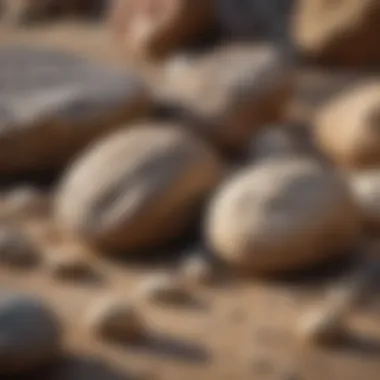
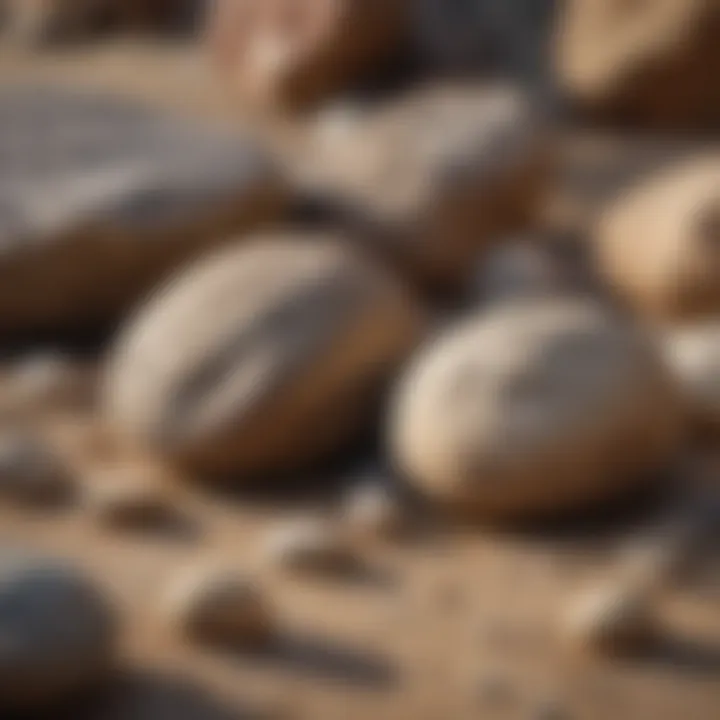
However, these machines might require more effort to achieve a smooth finish, especially on larger or tougher rocks. It’s essential to choose a model that offers variable speeds to adapt to different material types.
Tabletop Sanding Machines
Tabletop sanding machines strike a balance between functionality and workspace efficiency. Designed to be stationary, these machines often provide greater stability during use, allowing for a more consistent finish. Ideal for workshop environments, they come equipped with a variety of features that can be tailored to specific sanding tasks.
Including the ability to install different sanding belts or wheels can significantly broaden their usefulness. One major benefit of such machines is the power that often exceeds that of handheld models, making them suitable for tougher materials like granite or quartz.
- Advantages:
- Precision: The stable setup allows for detailed work on larger pieces.
- Better compatibility: With varied sanding attachments, they can quickly accommodate many types of rock.
- Efficient: Faster sanding, which can lead to reduced project time.
That said, the initial investment cost might be higher, and they require a designated workspace, which doesn’t appeal to everyone.
Industrial Sanding Machines
Industrial sanding machines are the heavyweights of the rock sanding arena. These machines are crafted for high volume and demanding tasks, favored by commercial operations or serious collectors who have a considerable quantity of rocks to polish. While they aren’t practical for home workshops, their features are worth exploring for those needing consistent, high-quality results.
Powered by robust motors, these machines facilitate faster, more thorough sanding processes, accommodating various grits and sanding techniques. Their robust design allows them to handle continuous use without a hitch, making them ideal for those who consider sanding a business or extensive hobby.
- Advantages:
- Speed: These machines can process many items in a shorter time frame.
- Durability: Built to last and handle heavy daily workloads.
- Advanced Features: Many come with programmable settings for better precision.
However, they often come with a hefty price tag, making them a consideration only for those committed to heavy-duty work in rock collection.
Applications of Rock Sanding Machines
Rock sanding machines are essential tools in various fields, particularly when it comes to handling raw materials like stone. Their applications extend beyond mere utility; they encompass a variety of disciplines such as geological research, artistic expression, and the curation of rock and mineral collections. By understanding these applications, hobbyists and professionals can leverage the full potential of their machines, investing in the right techniques and practices for each specific purpose.
Geological Research
In geological research, precision is paramount. Rock sanding machines enable scientists to prepare samples precisely for analysis. They can grind or polish rock samples to obtain a flat surface that is crucial for various tests such as petrographic analysis.
When researchers are examining the mineral composition of rocks, the clarity of the surface can influence interpretations significantly. For instance, a well-prepared thin section is fundamental for microscopy, allowing geologists to identify minerals accurately through their optical properties.
Further, the consistency in preparing samples helps in achieving reliable results over time. In this regard, using a rock sanding machine ensures uniformity in sample sizes and finishes, facilitating comparisons between different specimens. The end product plays a key role in our understanding of Earth's history, revealing the subjects of mineral evolution, structural geology, and even paleontology.
Artistic Rock Sculpting
Artistic rock sculpting is where the creative potential of rock sanding machines truly shines. Sculptors take rough slabs of stone and, using these machines, transform them into breathtaking pieces of art. Every chisel mark and sanding technique contributes to the final piece, embodying the sculptor's vision and the rock's inherent character.
Different rock types require varied approaches. For instance, limestone is softer and easier to shape, allowing for more intricate detailing. In contrast, granite presents a greater challenge due to its hardness. Sanding machines enable even beginners to achieve a polished finish, as they can work on smoothing rough edges and surfaces without needing exhaustive manual labor.
Moreover, this process often involves a mix of mechanical sanding and handwork. The machines provide a powerful advantage in shaping, while detailed finishing allows for personal touches unique to each artist's style. As a result, the integration of technology not only enhances but also diversifies artistic expression in stonework.
Rock and Mineral Collections
For avid collectors of rocks and minerals, rock sanding machines are a game changer. They allow collectors to enhance the aesthetic appeal of their specimens significantly. Through sanding, rocks can reveal colors and patterns that are often hidden in their rough state. This transformation increases the pieces' desirability and can also add value for collectors.
Furthermore, collectors may use these machines to prepare pieces for exhibitions or displays. A well-sanded rock not only enhances its visual appeal but also communicates the collector’s dedication to the hobby. Ensuring that each specimen is finished to a high standard shows the level of care given to building a collection.
"A polished piece can make a world of difference. When collectors put effort into presentation, it elevates the entire experience of discovering and sharing their passion for geology."
Using a rock sanding machine also educates collectors on the specifics of the rocks they own. By working on their pieces, they learn more about the material’s characteristics and how to best care for them, fostering a deeper appreciation for the intricacies of geology.
Techniques for Effective Rock Sanding
Rock sanding isn’t just a mundane task; it’s an art form that blends science with practical skills. Whether you're reshaping a stone for a collection or crafting a masterpiece, the techniques employed for effective rock sanding are pivotal. They ensure that the sanding process is not only efficient but also yields desirable results. Employing the right techniques helps in preserving the integrity of various rock types and achieving that perfect finish that grabs attention.
Selecting the Right Grit
Picking the right grit is akin to choosing the right paintbrush for an artist. Coarse grits—like 60 or 80—are great for tackling rough edges and shaping the stone, while finer grits—from 400 to 2000—are vital for attaining smoothness. One important aspect in this selection is the type of rock you’re working with. For instance, softer rocks may require finer grits sooner, as aggressive sanding could lead to unwanted scratches and damage. This tailored approach not only enhances efficiency but also increases the lifespan of your tools since you're not pushing them beyond their limits.
"The right grit isn’t just a number; it’s the tool that unlocks a rock’s hidden beauty."
Techniques for Different Rock Types
Granite
Granite, known for its toughness, presents unique challenges and opportunities when sanding. The hardness of granite requires a more systematic approach. Utilizing a medium grit, say 220, to refine shapes, followed by a transition to finer grits for the finish can yield astonishing results. A standout characteristic of granite is its ability to hold a shine once polished, which makes it a favorite among collectors and sculptors alike. However, its density also means you’ll need to be cautious. Overzealous sanding can lead to excessive heat, causing fractures, which is certainly an unwelcome addition to your masterpiece.
Marble
Marble is revered for its beauty and variability, but sanding it takes a bit of finesse. Known for its softer composition compared to granite, it can be sanded down much quicker. Typically, starting with a 120 grit and gently working up to 600 grit could bring out the splendid intricacies of its veining. An attractive element of marble is its ability to accept polish so well that the depth of color nearly leaps out at you. That said, the delicate nature of marble means it can scratch easily; thus, a gentle hand is crucial to avoid unsightly marks that could ruin a carefully crafted piece.
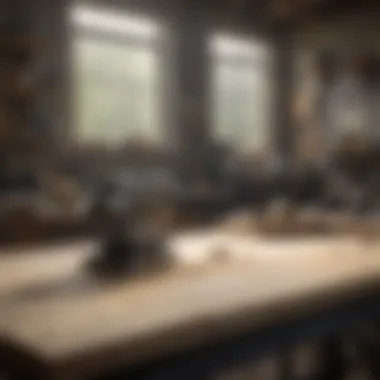

Soapstone
Soapstone is a lovable rock among hobbyists due to its softness and ease of manipulation. Sanding soapstone is mostly a forgiving task. Using grits from 200 through 600 works wonders, and it’s generally more resilient than other softer stones. The waxy feel of soapstone is not only delightful but also a unique factor that lends itself to a beautiful finish. However, one must remain conscious of its dust; it can create a fine mess that might clog sanders if not properly managed.
Achieving a Polished Finish
Obtaining that high-gloss finish is the cherry on the cake of rock sanding. After correctly employing the previous techniques, finishing involves using very fine grit papers and often a polishing compound.
To achieve a polished surface, you might want to drop down to grits like 1000 or higher. Implementing a consistent technique, such as circular motions or back-and-forth in a straight line, helps in generating uniformity in the sheen. Additionally, buffing the surface gently can take your piece from ordinary to extraordinary, making it something truly stunning in any collection.
All these techniques come together to enhance the aesthetic and monetary value of the rocks, making them even more appealing to collectors and artisans alike. When each step is done with care and precision, the result will truly speak for itself.
Maintenance of Rock Sanding Machines
Maintaining rock sanding machines is critical for ensuring long-term performance and efficiency. Much like a well-tended garden yields a bountiful harvest, consistent care and upkeep of these machines can dramatically improve their output and longevity. A well-maintained machine can save users time, reduce costs tied to repairs, and produce better results in their sanding tasks, whether they are seasoned professionals or hobbyists.
Regular Cleaning Practices
A clean machine is a happy machine. Engaging in regular cleaning practices is about more than just aesthetics; it's fundamental for optimal operation. Dust and debris can build up, leading to overheating or mechanical failure over time. Here's how to keep your rock sanding machine clean:
- Daily Maintenance: After each sanding session, wipe down all accessible surfaces. Use a brush or a vacuum to remove any dust or particles, especially around belts and motors.
- Deep Cleaning: Schedule a deeper clean at regular intervals, such as once a month or after heavy use. Disassemble components that can be easily removed to get at hard-to-reach areas.
- Lubricating Parts: Apply lubrication where necessary, particularly on moving parts. Manufacturer recommendations should guide you here, as different machines may require different lubricants.
By routinely cleaning your machine, you not only maintain its look, but you also ensure its performance stays top-notch.
Inspecting and Replacing Parts
Just as you wouldn't drive a car that has a worn-out tire, the same logic applies to rock sanding machines. Regular inspections help identify worn or damaged parts before they lead to serious issues. Make it a habit to check the following:
- Belts and Plates: Examine belts for signs of wear like fraying or cracking and replace them if needed. The same goes for sanding plates, which should be checked for any chips or deformations.
- Motor Functionality: Listen for anything out of the ordinary in the motor, such as squealing or grinding noises, which can indicate a need for repair or replacement.
- Calibration: Each machine has specific calibration settings. Regularly check and recalibrate them to ensure you are getting the best output.
By replacing parts before they fail, you save yourself the headache of unexpected breakdowns during critical projects.
Troubleshooting Common Issues
Despite the best maintenance practices, machines can often throw a wrench in the works. Knowing how to troubleshoot common issues can save time and frustration. Here are some typical problems and their solutions:
- Uneven Sanding: If your machine is producing uneven results, check the grit being used. Experiment with different grits to find a better match for your project needs.
- Excessive Vibration: If the machine vibrates excessively, inspect the sanding plates and ensure they are securely attached and in good condition. Additionally, check for any loose components.
- Power Issues: Lack of power could stem from a faulty power source or internal connections. Inspect all cords and connections before seeking professional help.
In situations where things seem hopeless, don't throw in the towel just yet. Many issues can be resolved with a bit of patience and methodical checking.
Regular maintenance can prevent bigger issues, helping you to keep your projects running smoothly and efficiently.
Safety Considerations in Rock Sanding
When it comes to rock sanding, prioritizing safety is as crucial as selecting the right equipment or choosing the best techniques. The process not only involves handling heavy machinery but also dealing with fine dust and debris which can lead to health issues if not properly managed. Understanding and implementing safety considerations ensures a smoother operation and minimizes potential hazards, making your sessions productive and enjoyable. A little caution goes a long way.
Personal Protective Equipment
Using the right personal protective equipment (PPE) is the first line of defense against potential risks. At a minimum, collectors and hobbyists should don safety goggles, which help to shield the eyes from flying particles. A good quality dust mask or respirator is equally vital, as it filters out harmful silica dust which can cause respiratory problems over time. Beyond the basics, consider wearing gloves to protect your hands from sharp edges on rocks and abrasives.
"Investing in PPE is like buying insurance; it's better to have it and not need it than to need it and not have it."
In addition to goggles and masks, using ear protection is recommended when operating louder machines to prevent hearing loss. Sturdy, closed-toed shoes are essential too—preferably steel-toed—since heavy rocks can easily fall during the sanding process.
Safe Operating Procedures
Implementing safe operating procedures is key to preventing accidents. Always start by thoroughly reading the operator’s manual for your specific machine. This document will provide crucial details about the operation, including any features that might enhance safety. When setting up your workspace, ensure it’s clear of obstacles, which can lead to trips and falls.
It's also important to keep bystanders at a safe distance while sanding. If you're working in a group, establish a designated area and maintain clear communication about who is operating the machine and where others are stationed. When sanding, hold the rock securely but avoid excessive force that might cause the machine to kick back.
Before disconnecting or adjusting any equipment, make sure it’s turned off at the power source. And finally, after each session, properly store machinery and materials to reduce risks during future projects.
Managing Dust and Debris
The dust generated from sanding rocks can pose significant health risks if not controlled. One effective strategy for managing this is to use a wet sanding method. By keeping the surface damp, you can significantly reduce airborne particles. This method also cools the material, which can prolong the lifespan of your tools and improve the finish.
Besides wet sanding, setting up a proper dust collection system can help. Consider using vacuum systems or dust extraction units that filter out harmful pollutants.
Regularly cleaning your work area helps maintain a safe environment. Ensure that surfaces are clear of debris after each session to prevent accumulation that might create hazards down the line.
Implementing these safety considerations not only protects you but also fosters a positive and conducive workspace for rock sanding. By adhering to these practices, enthusiasts can focus more on their passion with peace of mind.
Economic Aspects of Rock Sanding Machines
Understanding the economic factors surrounds rock sanding machines is crucial for both hobbyists and professionals in the geology and fossil collecting fields. Not only do these machines represent a significant investment, but they also play a vital role in enhancing the quality of work and the potential gains that collectors can achieve.
Costs of Machines and Maintenance
When one considers purchasing a rock sanding machine, the initial cost can vary widely based on the type and complexity of the machine. For instance, a simple handheld sander could be affordable, but advanced industrial units with sophisticated features can send prices skyrocketing into the thousands. The difference often lies in the materials used, in build quality, and in the technology embedded within the machines. It’s wise to assess the specific requirements one has to ensure that the choice is not merely guided by price; for example, investing a bit more in a machine can yield better results in terms of efficiency and durability.
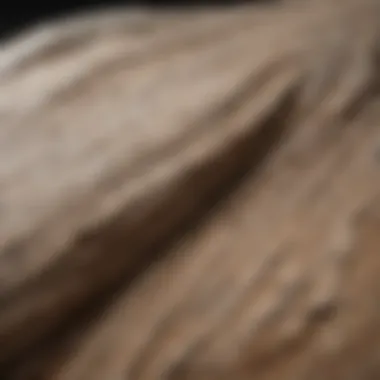
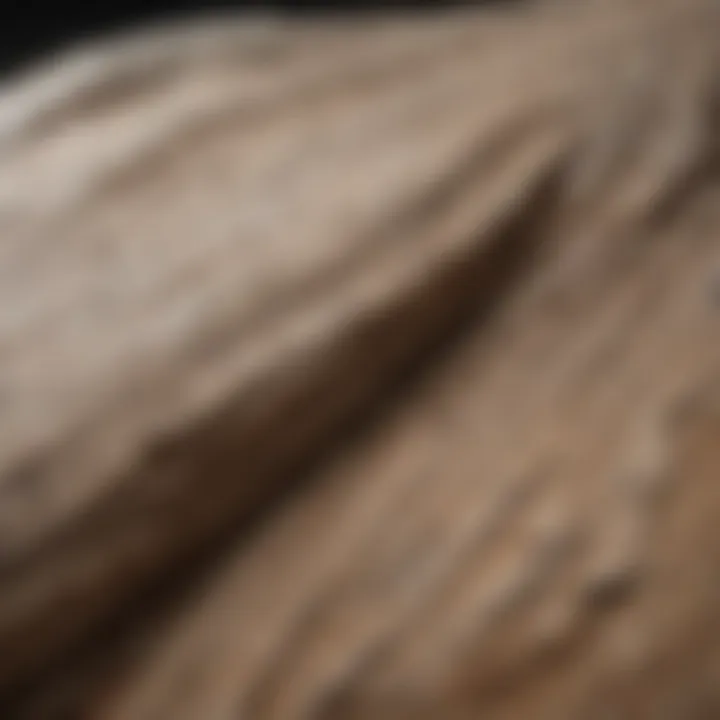
Regular maintenance costs should also be taken into account. Sanding machines endure wear and tear, especially when used regularly for polishing various rock types. This maintenance may include replacing worn-out parts, which can add up over time. Additionally, investing in quality sanding pads or belts can dramatically affect the final finish of the rocks, ensuring that collectors see the value in what they put into their tools.
- Key Factors to consider:
- Type of machine (handheld vs. industrial)
- Materials and construction quality
- Regular maintenance and upkeep costs
Return on Investment for Collectors
Investing in a rock sanding machine can lead to substantial returns, particularly for serious collectors and artisans who transform raw stones into desired products or art pieces. The return on investment (ROI) depends on several aspects:
- Quality of Work: A well-finished piece attracts higher prices in the market. For instance, a polished granite piece can fetch significantly more than its raw counterpart. A collector prioritizing quality thus sees a rewarding return from the right machine.
- Productivity: With the right sanding equipment, working time is dramatically reduced. Collectors can process larger quantities of rocks in shorter periods, leading to a higher output and potentially more sales.
- Market Demand: The niche one's working in also heavily influences ROI. If a collector specializes in rocks that are popular in home decor or jewelry making, for instance, the items’ value escalates, making the investment in high-quality machines justifiable.
The potential for profit exists, but the key is to approach these purchases as part of a broader business strategy. It's about understanding the balance between expenses incurred on equipment and the profit margin on finished products.
"When you view your rock sanding machine as an essential part of your toolkit rather than merely an expense, the economic picture becomes clearer. Each stroke of that sander is an investment in future profits."
This outlook turns the economic aspects from merely numbers on a report into actionable insights that benefit the collector, allowing them to fully leverage what rock sanding machines can do.
Future Innovations in Rock Sanding Technology
As we move into an era where technology intersects with traditional practices, the field of rock sanding is not left behind. Innovations are popping up that promise to enhance efficiency, effectiveness, and sustainability in rock sanding work. Collectors and enthusiasts can greatly benefit from these advancements, making their operations smoother and more enjoyable. The key elements of these innovations revolve around smart technology, automation, and sustainable practices, which will be explored below.
Smart Technology Integration
The integration of smart technology into rock sanding machines reshapes how we approach this vital task. Today’s machines can be outfitted with various sensors and software that provide real-time feedback during sanding. For example, machines like the Kaymo Pro Sander uses built-in sensors to monitor the pressure applied and the condition of the sanding belt, allowing a user to make adjustments on the fly. This level of monitoring not only optimizes performance but also extends the life of the machine—saving money in the long run.
Additionally, there's potential for connectivity features that allow users to track their sanding sessions through a mobile app. Imagine being able to log the types of rocks sanded, the techniques used, and the success of each session—all available in the palm of your hand! Such features can help hobbyists and professionals alike in refining their techniques and improving their outputs.
Collectively, these upgrades translate to more efficient and effective sanding, empowering users to produce better finishes with less effort.
Sustainable Practices in Sanding
With increasing awareness regarding environmental responsibility, sustainable practices in rock sanding are gaining traction. More manufacturers are focusing on using eco-friendly materials for sanding belts and pads. For example, brands such as 3M are experimenting with biodegradable abrasives, which signify a step forward in reducing waste. Rock and fossil collectors often have a strong connection to nature; thus, integrating more sustainable materials into their processes aligns with their values.
Moreover, energy-efficient designs are becoming the norm. Modern machines are being created to consume less power, which not only reduces operational costs but also minimizes the carbon footprint associated with sanding operations. It's a win-win, encouraging collectors to leave a lighter mark on the earth while still achieving the desired results.
Incorporating water systems for dust suppression is also gaining popularity. Such systems help manage particulate matter during the sanding process, promoting a cleaner workspace and better health outcomes for users.
In summary, the future of rock sanding is leaning towards enhanced functionality and environmental sensitivity, ushering in a new reality for collectors. Keeping an eye on these innovations is worthwhile for anyone engaged in the world of rock sanding.
End: The Role of Rock Sanding Machines in Collecting
In the realm of rock and fossil collecting, rock sanding machines serve as essential tools that marry practicality with artistry. These machines play a pivotal role in enhancing the quality and aesthetics of collected specimens. By allowing individuals to refine and polish rocks, they take raw geological materials and transform them into captivating pieces that truly shine.
Importance and Benefits
Rock sanding machines offer collectors several benefits. First, they enable precision in finishing surfaces. For a collector, a well-sanded piece not only looks good but can also reveal unseen features within the rock, such as textures and colors that were masked under rough exteriors. This can significantly elevate the collectible's overall value, both personally and financially.
One cannot overlook the convenience these machines provide. Collectors often have an eye for detail, and with a sanding machine, achieving that perfect smooth finish becomes achievable with less labor than traditional sanding methods. This efficiency means more time spent enjoying the collection rather than laboriously working on it.
Considerations in Usage
While the advantages are numerous, the use of rock sanding machines comes with its own set of considerations. It's crucial for collectors to understand the type of rock they are working with, as different materials respond uniquely to sanding techniques. Experimenting on less significant pieces can help in honing skills without damaging prized collections.
Additionally, the initial investment in a good quality sanding machine should be viewed as part of the larger collecting journey. As mentioned in the economic aspects section of this article, understanding return on investment is key. A well-maintained machine not only lasts longer but also enhances the quality of the work produced.
"Each rock has its story; sanding machines help tell it in vivid detail."
Final Thoughts
As collecting evolves with new technology, the role of rock sanding machines continues to expand. They bridge the gap between natural beauty and crafted art, allowing collectors to maximize their efforts in showcasing their finds. Craftsmanship in rock sanding is more than a mere finishing touch; it is an integral part of the collector's journey that brings the true essence of each specimen into focus. Connecting with fellow enthusiasts through forums on platforms like Reddit or community discussions on Facebook can also enhance knowledge and skills in effectively using these machines.
Further Reading and Resources
When diving into the world of rock sanding machines, having access to the right further reading and resources can be like having a treasure map guiding you through uncharted territory. This section highlights the significance of additional literature and community engagement that can enhance your knowledge and skills in this niche field.
Reading materials provide foundational insights and detailed techniques, while forums and discussions foster a sense of community. Together, they create an enriching environment for both novices and seasoned experts eager to elevate their craft. It's like having your own toolbox filled with valuable instruments crafted over time, ensuring you are equipped to tackle any challenge that comes your way.
Books on Geology and Sanding Techniques
Books are an indispensable resource for learning the complexities surrounding rock sanding. They delve deep into geological principles, types of rocks, and the corresponding methods for effective sanding.
- "The Rock and Gem Book" is an excellent starting place, providing rich illustrations and intricate details about rock types and properties.
- "Geology of North America" dives into the unique geological features across the continent, offering insights into what materials collectors might encounter.
- "Sanding Techniques for Fine Jewelry" might also appeal to those looking to blend rock sanding with art, as it combines traditional methods with innovative practices for polishing.
These books not only cover sandings but also the broader context of geology, thus deepening your understanding of the materials you work with. They often include step-by-step guides and visuals, making complex concepts more approachable.
Online Forums and Community Discussions
Engaging with others who share your interest in rock sanding can be incredibly beneficial. Online forums and community discussions can act as sounding boards for new ideas and practical experiences.
- Reddit hosts various subreddits for geological hobbies, like r/rockhounds, where you can connect with fellow collectors, exchange tips, or seek advice on specific sanding techniques.
- Platforms like Facebook have dedicated groups where users share their achievements, tools, techniques, and resources, making them a valuable space for learning through shared experiences.
Participating in these communities also allows you to stay updated with trends and innovations in the field, as members often share articles, workshops, and webinars that could enhance your knowledge.
In sum, these resources can significantly contribute to your journey in mastering rock sanding machines, exploring everything from the basics to intricate techniques and advancements in the industry.



